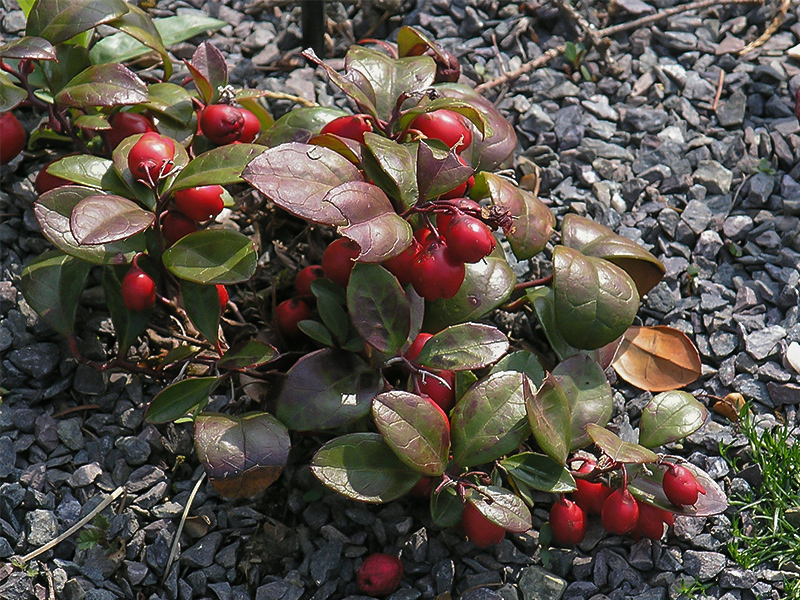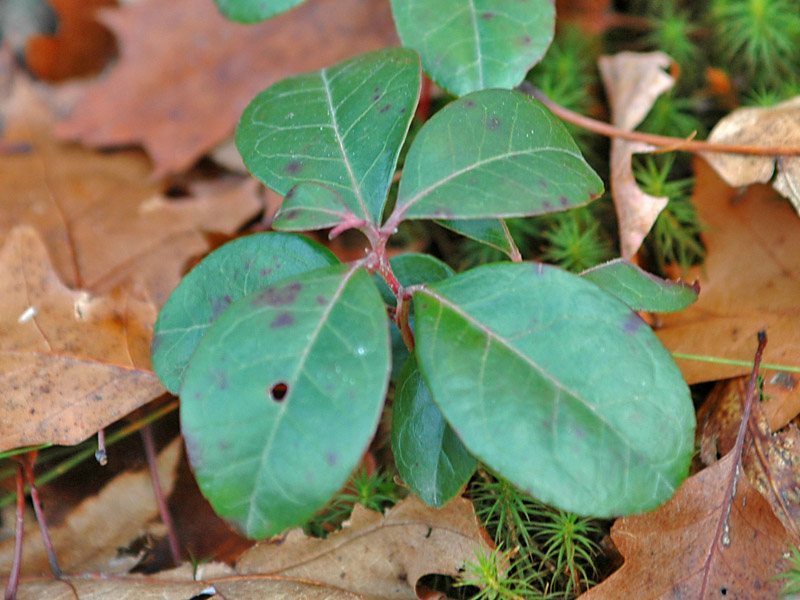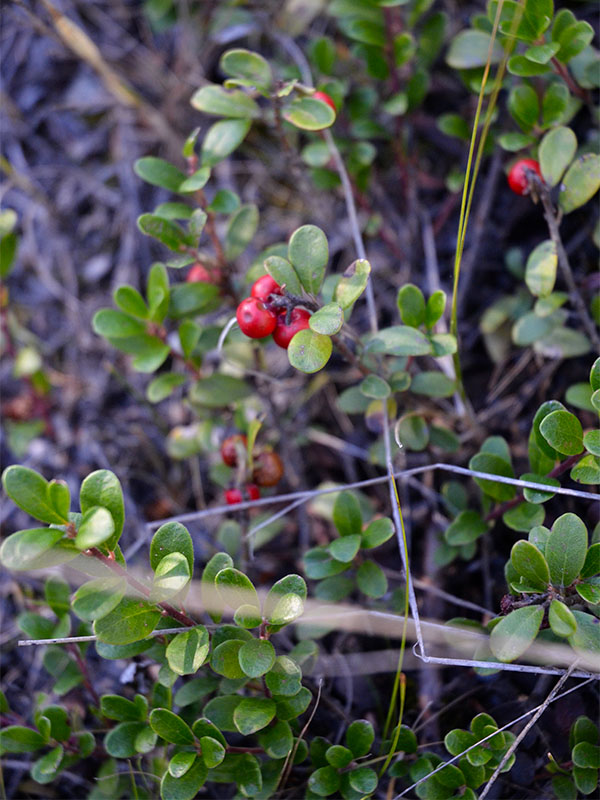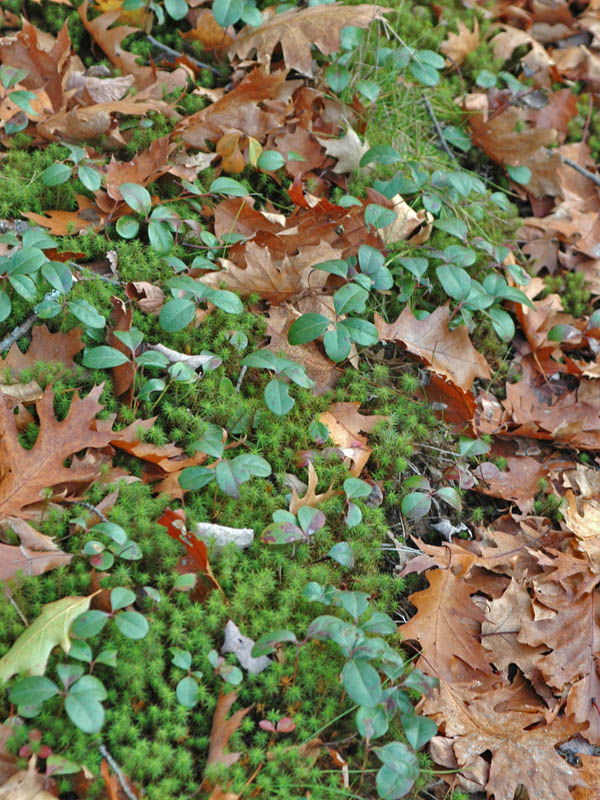
Woody > Gaultheria > Gaultheria procumbens > Gaultheria procumbens
Gaultheria procumbens
Checkerberry, Teaberry or Creeping Wintergreen
Origin: Named after a Canadian physician, Jean Francois Gaultier, who studied plants in Quebec. Both berries and foliage were used in making tea, hence one of its common names, Teaberry.
Mike's
Opinion


"
A low growing shrub often used as a ground cover. Once established Gaultheria procumbens grows readily and can, in ideal conditions, be considered invasive. The deep lustrous green foliage provides an excellent backdrop for the scarlet berries.
Michael Pascoe, NDP., ODH., CLT., MSc. (Plant Conservation)
"
| Family |
| Ericaceae |
| Genus |
| Gaultheria |
| Species |
| procumbens |
| Category |
| Woody |
| Type |
| Shrub (evergreen) |
| Pronunciation |
| USDA Hardiness Zone |
| 7b - 8a |
| Canadian Hardiness Zone |
| 7b |
| RHS Hardiness Zone |
| H5 (I have successfully grown this plant easily in H7) |
| Temperature (°C) |
| -15 to -10 |
| Temperature (°F) |
| 5 - 14 |
| Height |
| 5-15 cm |
| Spread |
| 15-30 cm |
Photographs
Description and Growing Information
Flowering Period
| General Description |
| G. procumbens has dark green, low growing foliage that develops a purple tinge in the autumn. When the foliage is crushed, it smells of winterberry. Bright red berries appear on the plant beginning in July and remain and persist through the winter into April: the berries are often used in medicinal teas. Small bell shaped, white to pink flowers appear on the plant in mid-summer. |
| Landscape |
| Gaultheria procumbens is commonly grown as a ground cover, thriving in light shade or full sun. The bright red berries provide excellent late season interest against the backdrop of its dark green leaves and persist well into lasting the winter months. As a ground cover it may be considered according to some literature) invasive in ideal conditions however I have never experienced this. |
| Cultivation |
| Gaultheria procumbens thrives in acid, sandy soils that are well drained and once established can tolerate periods of drought. It does well in partial shade to full sun and therefore grows as an under larger trees in its natural habitat. |
| Shape |
| Low mounding to trailing evergreen groundcover shrub of approximately 5 - 15 cm. |
| Growth |
| Slow |
| ID Characteristic |
| It is a low growing plant with dark green jagged toothed foliage and scarlet red berries. |
| Pests |
| Gaultheria procumbens had no notable pests or diseases. |
| Habitat |
| Grows in the shade of larger trees in forest areas. Prefers acid, sandy soils and tolerates drought conditions once established. |
| Bark/Stem Description |
| G. procumbens has uninteresting smooth grey to light green bark. |
| Flower/Leaf Bud Description |
| Buds are 1 mm in length, smooth and red in colour. |
| Leaf Description |
| The leaves are oval to obviate, 13 mm long and 2 cm wide with serrate margins and are a shiny deep dark green in colour. Leaves are held on a 4 mm long petiole. The foliage turns a purple to red tinge in the autumn, a strong menthol smell is produced l when the foliage is crushed. |
| Flower Description |
| A cluster of 6.5 mm, nodding, white to pink flowers appear in July, they are five petaled and are pollinated by insects. |
| Fruit Description |
| Oils are extracted from the 9 x 12 mm capsules, to produce medicinal teas used to relieve cough and fever symptoms. The fruit develops in July and remains on the plant until April. |
| Colour Description |
| G. procumbens has dark, lustrous, green foliage that turns purple to red in the autumn while the fruit is scarlet red that last through the winter season. |
| Texture Description |
| Medium. |
| Propagation |
| Seedlings require a cold stratification of 4°C for approximately four to ten weeks. Cuttings should be taken spring. Both methods can be difficult thus propagation is frequently achieved through division. |
References
Dirr, Michael A. Manual of Woody Landscape Plants. 6th Edition. Champaign, Illinois: Stipes Publishing. 2009
Davis, Brian. The Gardener's Illustrated of Trees and Shrubs. Emmaus, PA: Breslich. 1987




